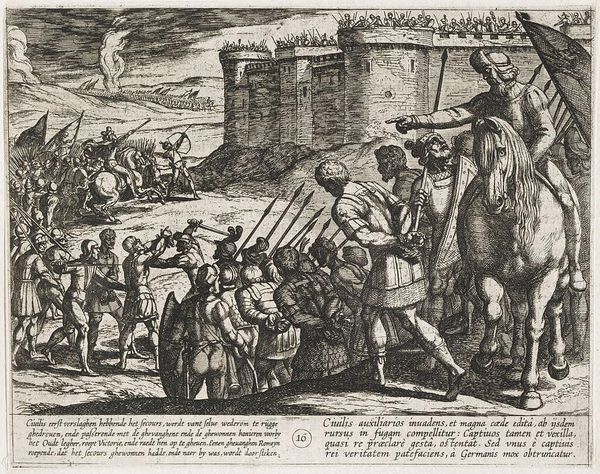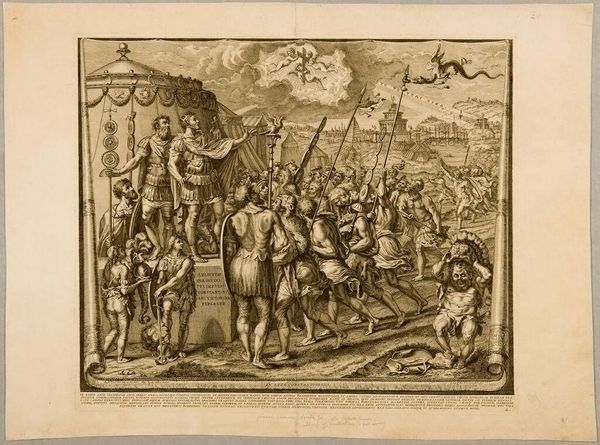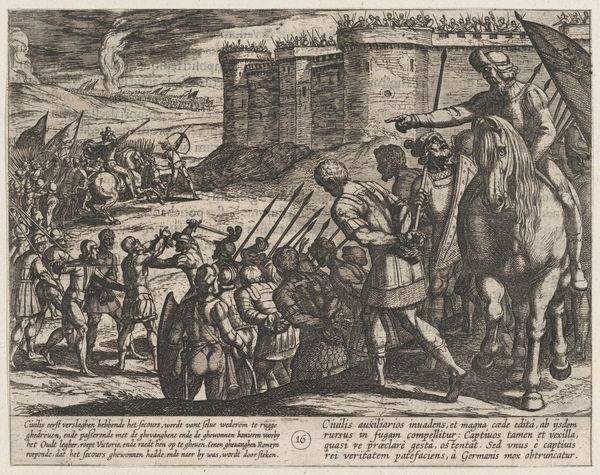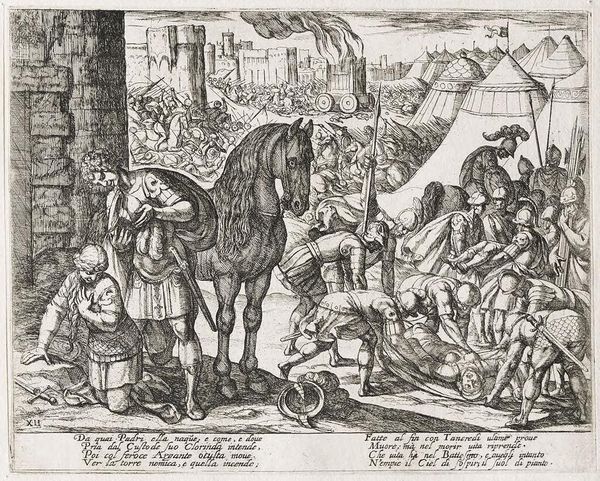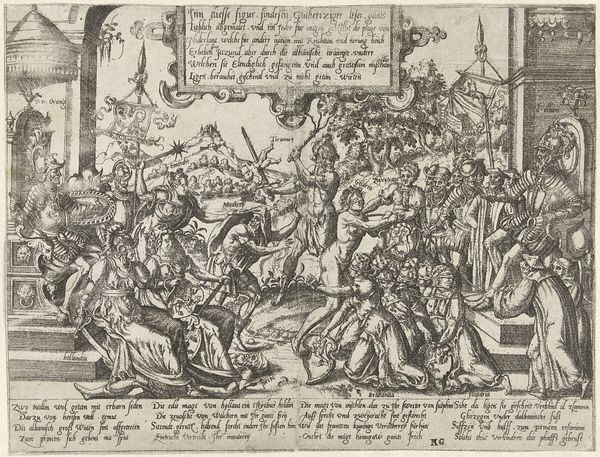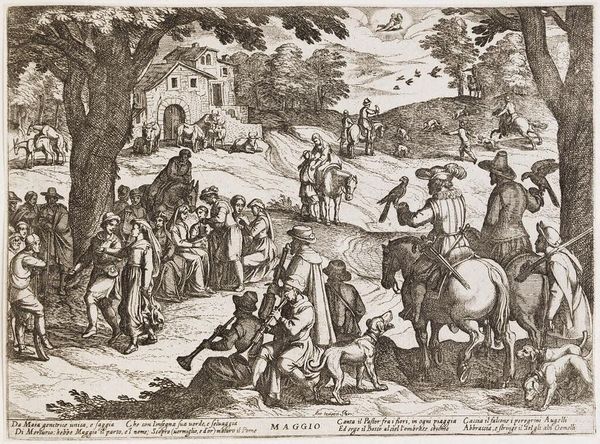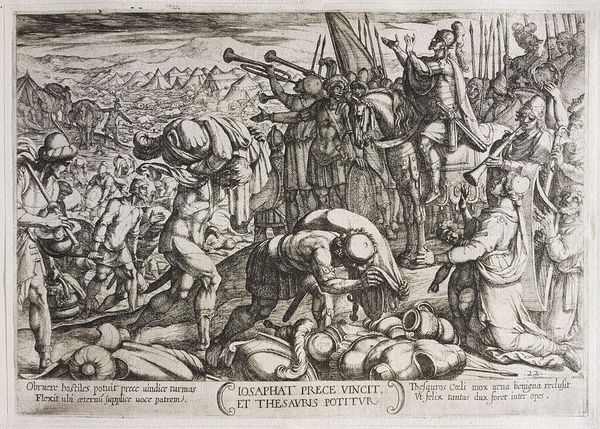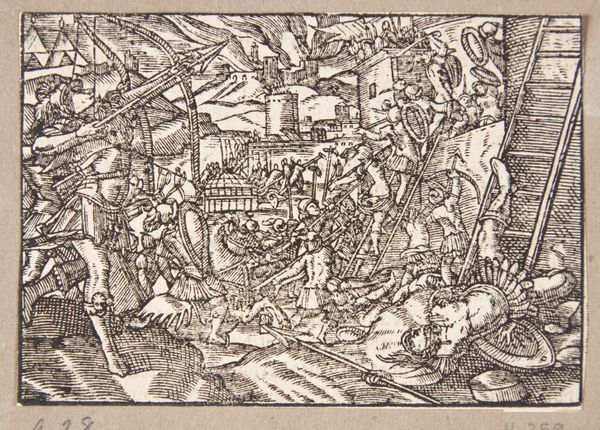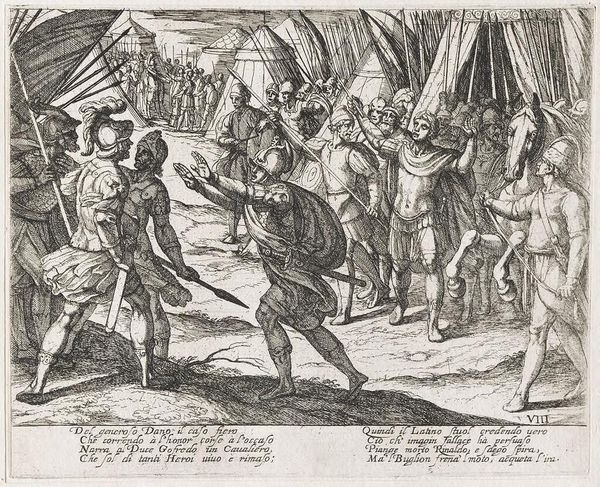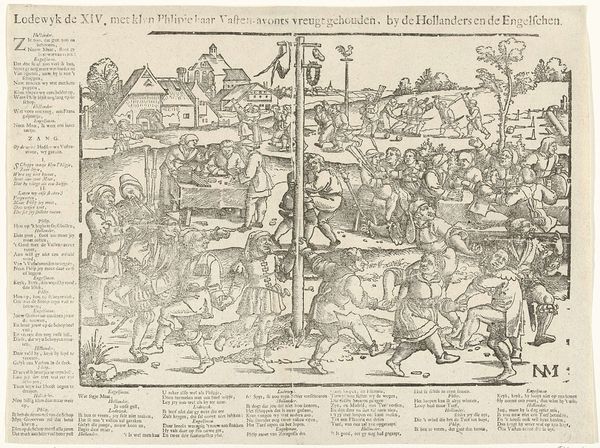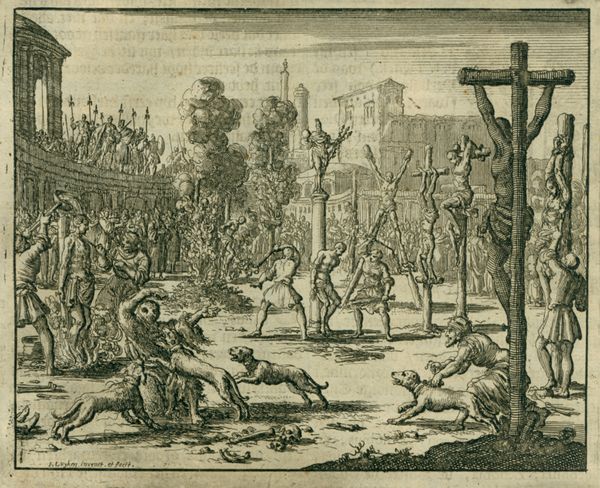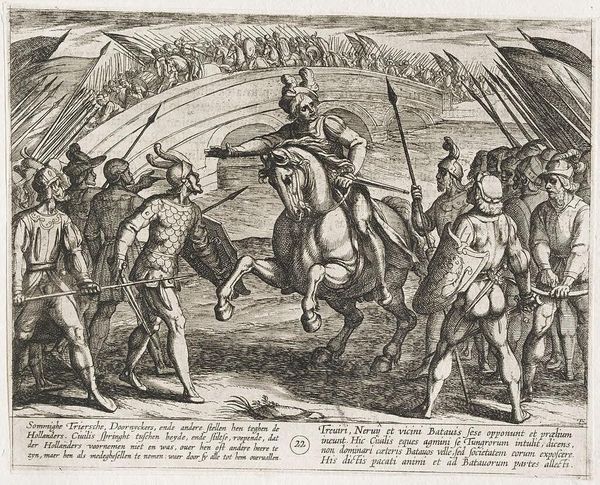
print, engraving
#
narrative-art
#
baroque
# print
#
figuration
#
history-painting
#
engraving
Dimensions: height 171 mm, width 470 mm
Copyright: Rijks Museum: Open Domain
Editor: This print, “Spotprent op de Roomse kerk” from 1616 is an engraving by an anonymous artist. Its dense composition feels incredibly charged, like there’s a lot of social commentary packed into the imagery. What do you see in this piece, especially regarding its historical context? Curator: It's indeed a potent visual statement. We’re looking at a piece created during a period of intense religious and political upheaval. The Reformation’s challenge to the Catholic Church spurred widespread conflict and the reshaping of European power structures. This print uses symbolism and caricature to critique the Roman Catholic Church. Editor: So, it’s essentially a piece of propaganda? Curator: Precisely. Look at the figures – their exaggerated features and gestures. The artist employs satire to undermine the authority and perceived hypocrisy of the Church. The chaos in the composition reflects the societal discord of the time. How do you interpret the chaotic scene in relation to power? Editor: I see the Church’s hierarchy seemingly entangled, as if caught in their own web, literally and figuratively. It makes me think about systems of oppression and how they perpetuate themselves, often ensnaring those within them. Curator: Exactly! And the choice of a print as the medium is significant. It allowed for wide dissemination of this critique, democratizing dissent in a way previously unavailable. It speaks to the burgeoning power of the people to challenge established institutions through visual media. What broader narratives about the distribution of power do you see here? Editor: I never thought about the medium in relation to social power, that is a really interesting point of view. This image helped me consider how art can actively participate in challenging power dynamics, and the different roles of the creator and the public in questioning established norms. Curator: And remember, these historical battles for social and religious justice resonate with many of our contemporary struggles, encouraging critical conversations about the art that surrounds us.
Comments
No comments
Be the first to comment and join the conversation on the ultimate creative platform.

